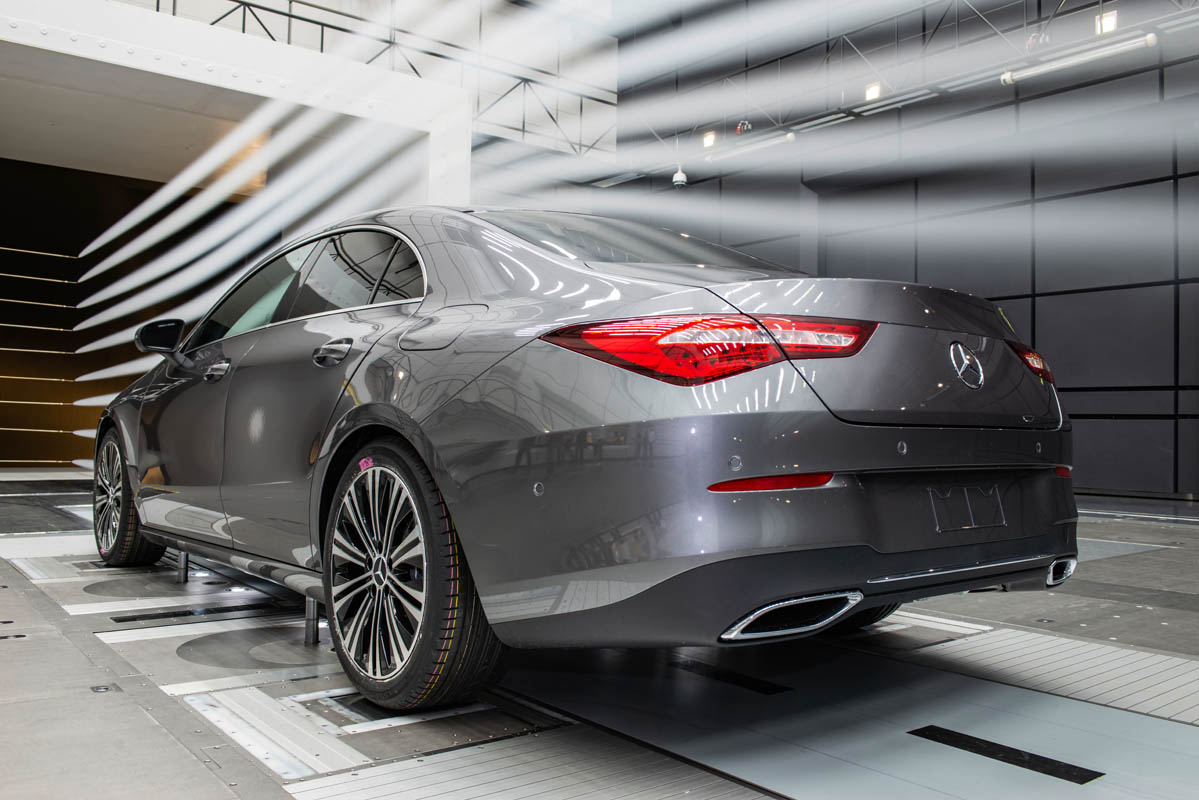Introduction
Car aerodynamics plays a crucial role in determining vehicle stability, safety, and overall performance on the road. As vehicles move through air, they create complex airflow patterns that generate forces directly impacting how a car handles, steers, and maintains control at various speeds. Understanding aerodynamic principles helps drivers, automotive engineers, and car enthusiasts appreciate why modern vehicles are designed with specific shapes, features, and components that optimize airflow for maximum stability.
The relationship between aerodynamics and car stability extends far beyond simple wind resistance. Air flowing around, over, and under a vehicle creates lift forces, downforce, drag, and side forces that continuously influence driving dynamics. These aerodynamic forces become increasingly significant as vehicle speeds increase, making aerodynamic design essential for both everyday driving safety and high-performance applications.
Understanding Basic Aerodynamic Principles in Automotive Design
Fundamental Forces Acting on Moving Vehicles
When a car moves through air, four primary aerodynamic forces affect vehicle stability. Drag force opposes forward motion, requiring more engine power to maintain speed. Lift force acts vertically, potentially reducing tire contact with the road surface. Side forces push the vehicle laterally, especially during crosswinds or when cornering. Downforce, the opposite of lift, presses the vehicle downward, improving tire grip and stability.
These aerodynamic forces interact with a vehicle’s weight distribution, suspension geometry, and tire characteristics to determine overall stability behavior. Engineers must carefully balance these forces to create vehicles that remain stable and controllable across various driving conditions and speeds.
Airflow Patterns Around Vehicle Bodies

Air flowing around a car creates distinct pressure zones that directly impact stability. High-pressure areas form at the front of the vehicle where air impacts the grille, bumper, and windshield. Low-pressure zones develop behind the vehicle and in areas where airflow separates from the body surface. These pressure differences generate the forces that influence vehicle stability.
The shape of a vehicle’s body determines how smoothly air flows around it. Streamlined designs with gradual curves and minimal sharp edges promote attached airflow, reducing turbulence and improving stability. Conversely, vehicles with abrupt shape changes or poor aerodynamic design create turbulent airflow patterns that can destabilize the vehicle, particularly at higher speeds.
How Aerodynamics Affects Vehicle Stability at Different Speeds
Low-Speed Stability Considerations
At low speeds, typically below 30 miles per hour, aerodynamic forces have minimal impact on car stability. Vehicle weight, suspension design, and tire grip dominate stability characteristics during city driving, parking, and slow maneuvering. However, even at moderate speeds, crosswinds can create noticeable side forces that require driver input to maintain straight-line stability.
Modern vehicles incorporate aerodynamic features that improve stability even during low-speed driving. Front air dams, side skirts, and carefully shaped bumpers help manage airflow around the vehicle, reducing the formation of turbulent air pockets that could affect stability during sudden maneuvers or in windy conditions.
High-Speed Aerodynamic Stability Challenges
As vehicle speeds increase beyond 50 miles per hour, aerodynamic forces begin significantly affecting stability. Lift forces can reduce effective vehicle weight, decreasing tire grip and making the car feel “light” or unstable. Poorly designed vehicles may experience lift-induced instability, where the front or rear of the car becomes difficult to control due to reduced downward force on the tires.
High-speed stability requires careful management of airflow to minimize lift while controlling drag. Sports cars and performance vehicles often incorporate aggressive aerodynamic features like front splitters, rear spoilers, and underbody panels to generate downforce and maintain stability at high speeds. These features help keep the vehicle planted on the road surface, improving both stability and cornering performance.
Aerodynamic Design Features That Enhance Car Stability
Front End Aerodynamic Components
The front of a vehicle plays a critical role in determining overall aerodynamic stability. Front spoilers and air dams redirect airflow around and under the vehicle, reducing lift-generating low-pressure areas beneath the car. These components also help channel cooling air to the engine and brakes while minimizing turbulence that could affect stability.
Grille design significantly impacts both cooling efficiency and aerodynamic stability. Modern active grille shutters can close at higher speeds to improve airflow smoothness, reducing drag while maintaining engine cooling. The integration of headlight shapes, bumper contours, and front fascia design all contribute to managing airflow for optimal stability.
Rear Aerodynamic Elements and Spoiler Effects
Rear spoilers and wings are among the most visible aerodynamic stability features on modern vehicles. These components work by managing airflow separation at the rear of the vehicle, reducing the low-pressure wake that creates lift and instability. Properly designed rear spoilers can significantly improve high-speed stability without creating excessive drag.
The effectiveness of rear aerodynamic elements depends on their size, angle, and position relative to the vehicle body. Small lip spoilers on passenger cars provide modest stability improvements, while large wings on sports cars generate substantial downforce for enhanced high-speed control. The key is matching the aerodynamic component to the vehicle’s intended use and performance requirements.
Underbody Aerodynamics and Ground Effects
The underside of a vehicle represents a critical area for aerodynamic stability that is often overlooked. Smooth underbody panels, engine covers, and diffusers help manage airflow beneath the car, reducing lift-generating pressure differences between the top and bottom surfaces. Well-designed underbody aerodynamics can provide significant stability improvements without affecting vehicle appearance.
Ground effects systems use the vehicle’s underbody to create a venturi effect, accelerating airflow beneath the car to generate downforce. This approach provides excellent stability benefits while maintaining clean exterior styling. Many modern vehicles incorporate partial ground effects through the use of front air dams, side skirts, and rear diffusers.
The Impact of Vehicle Shape on Aerodynamic Stability
Sedan vs SUV Aerodynamic Characteristics
Different vehicle body styles exhibit distinct aerodynamic stability characteristics. Sedans typically offer better aerodynamic stability due to their lower profile and more streamlined shape. The gradual transition from windshield to roof to rear deck helps maintain attached airflow, reducing lift and improving stability at speed.
SUVs and trucks present greater aerodynamic stability challenges due to their taller, more upright profiles. The increased frontal area and higher center of gravity make these vehicles more susceptible to crosswinds and aerodynamic instability. However, modern SUV designs incorporate aerodynamic features like roof spoilers, side cladding, and optimized underbody panels to improve stability while maintaining functionality.
Sports Car Aerodynamic Advantages
Sports cars benefit from low-profile designs that naturally promote aerodynamic stability. The low hood line, sloped windshield, and tapered rear section create favorable airflow patterns that minimize lift while reducing drag. Many sports cars also incorporate active aerodynamic elements that adjust based on speed and driving conditions to optimize stability.
The integration of functional aerodynamic features with sports car styling creates vehicles that look fast while actually being more stable at high speeds. Features like side air intakes, rear diffusers, and integrated spoilers serve both aesthetic and functional purposes, enhancing both appearance and aerodynamic performance.
For more insights and scientific explanations consider reading up on Airshaper
Advanced Aerodynamic Technologies for Modern Vehicles
Active Aerodynamic Systems
Modern vehicles increasingly incorporate active aerodynamic systems that automatically adjust to optimize stability and efficiency. Active front grille shutters close at higher speeds to reduce drag while opening for engine cooling when needed. Adjustable rear spoilers can deploy or change angle based on vehicle speed, providing additional downforce for stability when required.
These active systems represent the evolution of aerodynamic design from static components to dynamic systems that respond to changing driving conditions. Some luxury and performance vehicles feature active underbody panels, adjustable ride height systems, and variable-geometry aerodynamic elements that continuously optimize airflow for maximum stability.
Computational Fluid Dynamics in Aerodynamic Design
Advanced computer simulation allows engineers to optimize vehicle aerodynamics for stability before building physical prototypes. Computational fluid dynamics modeling can predict airflow patterns, pressure distributions, and aerodynamic forces with remarkable accuracy. This technology enables the development of vehicles with superior aerodynamic stability while reducing development time and costs.
Wind tunnel testing remains important for validating computer simulations and fine-tuning aerodynamic designs. Modern automotive wind tunnels can simulate real-world driving conditions, including crosswinds, road surface effects, and moving ground planes that provide more accurate stability data than traditional static testing methods.
Real-World Applications and Benefits of Aerodynamic Stability
Fuel Economy and Stability Relationships
Improved aerodynamic stability often correlates with better fuel economy, as both benefits result from optimized airflow management. Vehicles with good aerodynamic stability typically have lower drag coefficients, requiring less engine power to maintain highway speeds. This relationship makes aerodynamic optimization beneficial for both performance and efficiency.
However, some stability-enhancing features like large rear spoilers or aggressive underbody components may increase drag while improving downforce. Engineers must balance stability requirements with fuel economy goals to create vehicles that meet both performance and efficiency targets.
Safety Improvements Through Aerodynamic Design
Aerodynamic stability directly contributes to vehicle safety by improving predictable handling characteristics and reducing the likelihood of loss of control situations. Vehicles with good aerodynamic stability are less affected by crosswinds, truck wake turbulence, and other external air disturbances that can surprise drivers and lead to accidents.
The stability benefits of good aerodynamic design become particularly important during emergency maneuvers, high-speed driving, and adverse weather conditions. A vehicle that remains stable and predictable in these situations gives drivers a better chance of maintaining control and avoiding accidents.
Future Developments in Automotive Aerodynamics
Electric Vehicle Aerodynamic Considerations
Electric vehicles present unique aerodynamic challenges and opportunities for stability optimization. The absence of a traditional internal combustion engine allows for more flexible packaging and potentially better aerodynamic integration. However, the weight and placement of battery packs can affect the center of gravity and aerodynamic balance.
Many electric vehicles achieve excellent aerodynamic efficiency through careful attention to body shaping, underbody design, and the elimination of traditional grille openings. These design approaches often result in improved stability characteristics while maximizing driving range through reduced aerodynamic drag.
Autonomous Vehicle Aerodynamic Requirements
The development of autonomous vehicles may change aerodynamic stability priorities as computer control systems can potentially compensate for some aerodynamic instabilities that would challenge human drivers. However, good aerodynamic design will likely remain important for efficiency, comfort, and system reliability reasons.
Sensors and cameras required for autonomous operation must be integrated without compromising aerodynamic performance. This integration challenge will drive innovation in both sensor technology and aerodynamic design to maintain stability while enabling autonomous functionality.
Conclusion
The role of aerodynamics in car stability represents a fundamental aspect of automotive design that affects every vehicle on the road. From the basic principles of airflow around vehicle bodies to advanced active aerodynamic systems, understanding these concepts helps explain why modern cars are shaped the way they are and how they achieve stable, predictable handling characteristics.
As automotive technology continues to evolve with electric powertrains, autonomous driving systems, and increasingly efficient designs, aerodynamic stability will remain a critical factor in vehicle development. The integration of computational design tools, active aerodynamic systems, and advanced materials will continue to push the boundaries of what is possible in automotive aerodynamic design.
Whether driving a family sedan, performance sports car, or utility vehicle, every driver benefits from the careful attention to aerodynamic stability that modern automotive engineers incorporate into their designs. These invisible forces working on every moving vehicle play a crucial role in the safety, efficiency, and performance that drivers experience every time they get behind the wheel.



